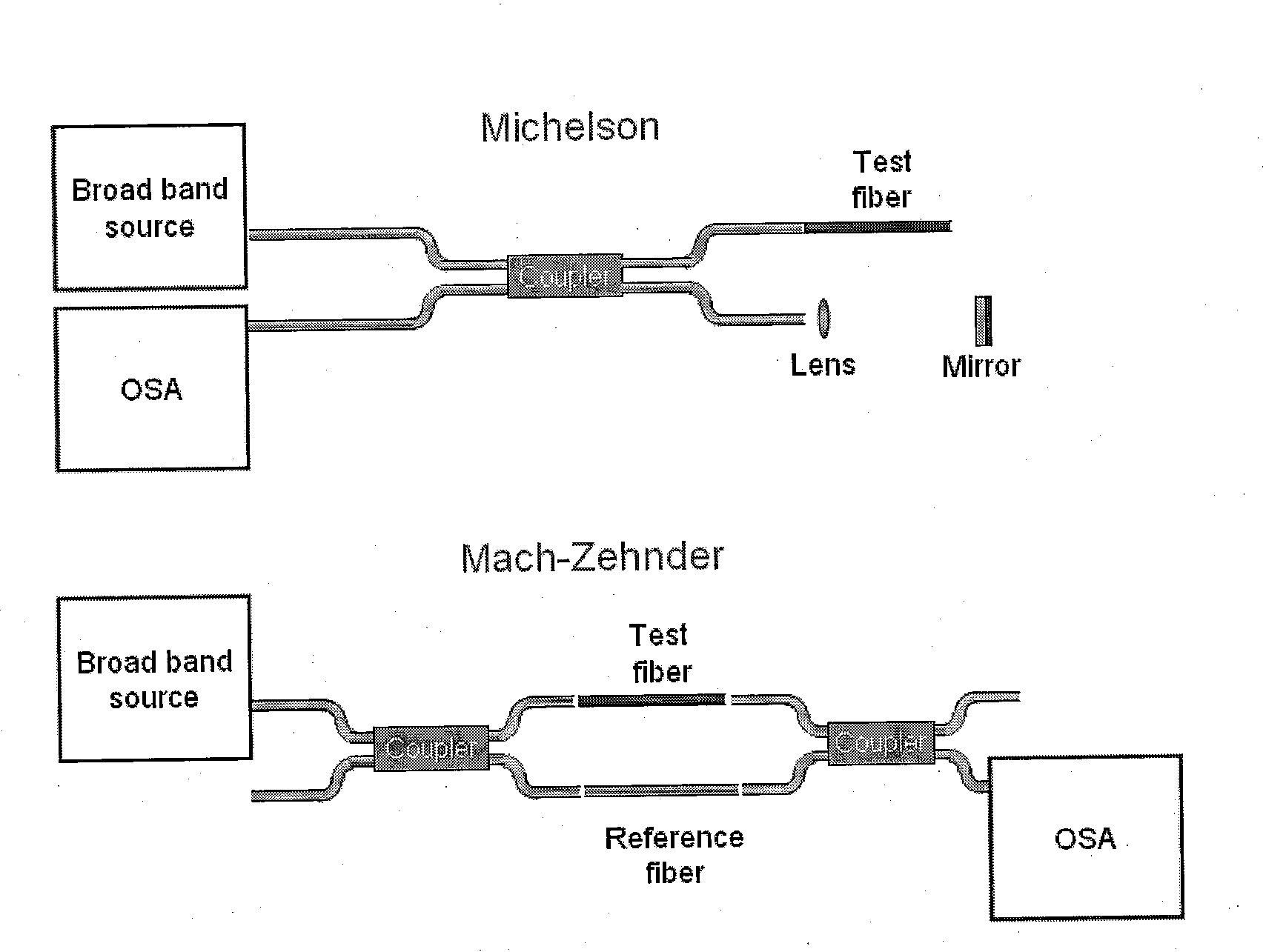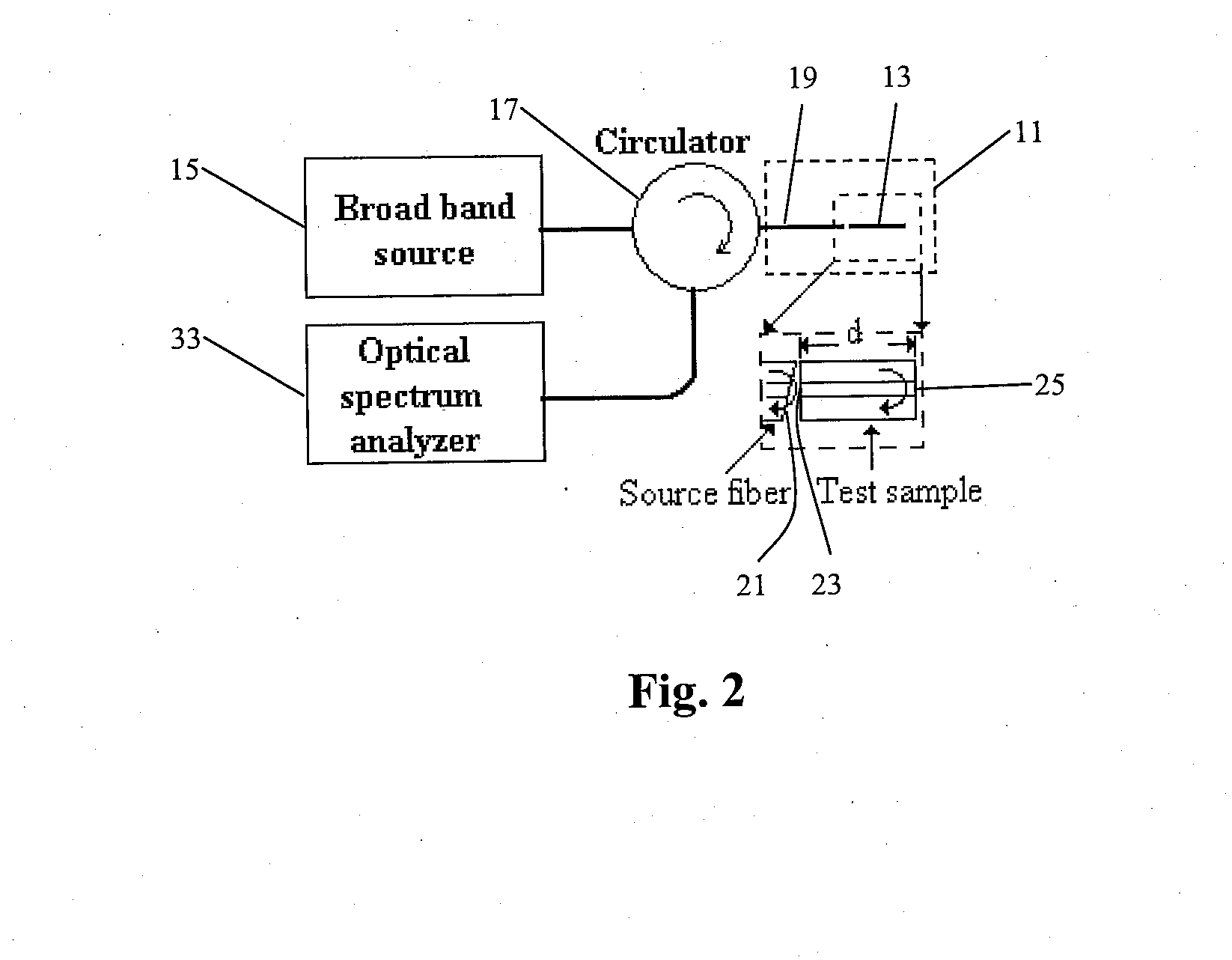System and Method to Determine Chromatic Dispersion in Short Lengths of Waveguides Using a Common Path Interferometer
a technology of chromatic dispersion and path interferometer, which is applied in the direction of measurement devices, instruments, material analysis through optical means, etc., can solve the problems of intersymbol interference, no longer being able to determine whether, and reducing the number of bits that can be transmitted
- Summary
- Abstract
- Description
- Claims
- Application Information
AI Technical Summary
Benefits of technology
Problems solved by technology
Method used
Image
Examples
experimental verification
2: Experimental Verification
2.1 Experimental Process
[0060]The first step in the experiment is to set up the Single Arm Interferometer and to assemble the control and data acquisition hardware. The second step in the experiment is to test the technique by using it to measure the dispersion of fibers for which the dispersion curves are known or that can easily be measured using conventional techniques.
[0061]The Single Arm Interferometer measured the dispersion parameters for two different samples: 6 mm twin-hole fiber and 2.88 mm AlGaAs waveguide. The fiber sample consists of two air holes 45 μm radius each and a 4 μm radius Ge doped silica core located closer to one of the holes. The waveguide is a 1.5 μm Al0.18Ga0.82As core layer, surrounded above and below by Al0.24Ga0.76 as cladding layers (1.5 μm above, and 4.0 μm below), grown on a GaAs substrate. The in-plane confinement was achieved by photolithography and dry etching of 3.5 μm wide and 2 μm deep ridge. The maximum sub-band wi...
PUM
 Login to View More
Login to View More Abstract
Description
Claims
Application Information
 Login to View More
Login to View More - R&D
- Intellectual Property
- Life Sciences
- Materials
- Tech Scout
- Unparalleled Data Quality
- Higher Quality Content
- 60% Fewer Hallucinations
Browse by: Latest US Patents, China's latest patents, Technical Efficacy Thesaurus, Application Domain, Technology Topic, Popular Technical Reports.
© 2025 PatSnap. All rights reserved.Legal|Privacy policy|Modern Slavery Act Transparency Statement|Sitemap|About US| Contact US: help@patsnap.com



